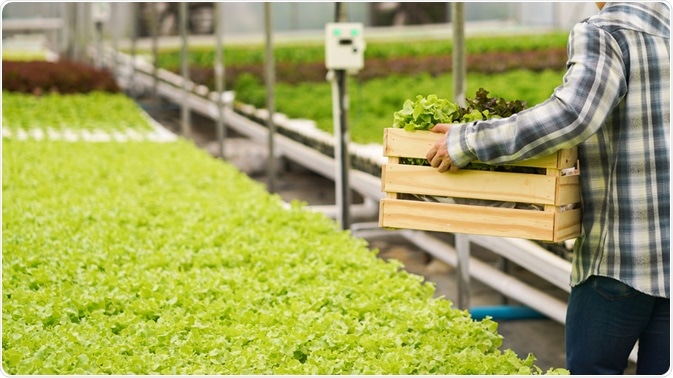The global human food chain faces significant and sustained threats from an increasing number of transboundary animal and plant diseases and pests in addition to food safety and radiation events. These risks are particularly important to address at the present moment given the rising levels of acute food insecurity in countries around the world.

Image Credit: KomootP/Shutterstock.com
Over the past several years, the developmental gains in food security have been lost due to the impact of conflict, climate change, natural hazards, pests and disease, and socio-economic conditions on the food chain. The COVID-19 pandemic exacerbated these problems, leaving an unprecedented number of people without the assurance of sufficient nutrition each day.
Here, we explore what risks the human food chain faces and how these issues may be overcome to ensure food security.
Risks to the global human food chain
Each year, roughly 10% of the world’s population becomes ill from consuming food that has been contaminated, and around 420,000 die from this. Additionally, in 2020, an estimated 720 to 811 million people went hungry. These figures emphasize the importance of protecting the food chain to ensure that food is safe to eat and that there is enough of it for everyone.
Over recent years, risks to the human food chain have increased. This is partly due to the increased movement of people, plants, and animals between countries, which allows pathogens to cross international borders. As a result, plants and animals are at a greater risk of contracting diseases, and plagues have the opportunity to spread from one region to another.
Examples of some of the most prevalent threats currently facing the food chain are armyworm, avian influenza, cassava, food-borne pathogens, locust infestations, peste des petits ruminants, mycotoxins, and wheat, cassava, maize, and banana diseases. Further to this, the human food chain also faces the increasing risk of pollutants due to human activity that is compromising soils and waters, as well as numerous risks related to climate change patterns such as droughts, extreme weather events, pests infestations, soil erosion, all which impact agricultural production.
These risks to the human food chain have significant implications for global food security, human health, global markets, livelihoods, and national economies. Therefore, they must be tackled with utmost importance. Fortunately, agencies such as the Food Chain Crisis - Emergency Prevention System (FCC-EMPRES) have been established to implement preventative measures in response to food chain emergencies.
Strategies to overcome food chain risks
EMPRES highlights that transboundary animal diseases that pose threats regionally, nationally, and internationally must be detected rapidly and early and that responses to these threats must be implemented in a timely fashion. EMPRES also emphasizes that these approaches must be standardized both nationally and internationally to ensure success. Avian influenza, peste des petits ruminants, foot-and-mouth disease, Brucellosis are diseases that must be handled in this manner.
Recently, through the help of EMPRES, countries have been working to develop their capabilities at responding to threat to animal food sources. They are setting up systems of early warning and strategic planning, implementing rapid response to animal health emergencies, as well as coordinating resources, partners, and actions to enhance the protection of animals, as well as those who work with them. Finally, because 70% of human diseases originate in animals, EMPRES is also embracing the One Health approach to tackling animal health issues.
As well as setting up strategies to protect animals in the food chain, EMPRES are also working on protecting plants. They are focussing on several transboundary pests and diseases, those that pose a particular risk to the human food chain such as the Desert Locust, the armyworm (in eastern and southern Africa), fruit flies (which currently impact the horticultural industry of over 30 countries in Africa), and crop disease including wheat, coffee, banana, cassava, and maize diseases. As with managing animal disease, EMPRES highlights that monitoring and early warning systems are key to the prevention of transboundary plant pests and diseases. Specialized tools dedicated to recording and communicating field data regarding such pests and diseases will play a fundamental role in managing these threats to the food chain.
Food safety is the third major risk to the food chain. Increased global trade means that food travels further and farther than ever before, bringing food-borne pathogens with it. Prevention-oriented food control systems are being established so that the transmission of pathogens across borders can be prevented, and the spread of harmful pathogens can be contained.
Climate change presents the final significant threat to the food chain. Global warming has a significant impact on numerous factors that affect the agricultural industry, water availability, extreme weather events, soil quality, droughts, and infestations are all factors that are influenced by climate change. Therefore, tackling climate change has the potential to significantly reduce risks to the human food chain.
The power of addressing risks to the food chain
Protecting the human food chain is vital to ensuring future food security, as well as reducing global poverty and hunger, improving nutrition, promoting sustainable agricultural practices as well as sustainable economic growth.
Further Reading
Last Updated: Dec 2, 2021